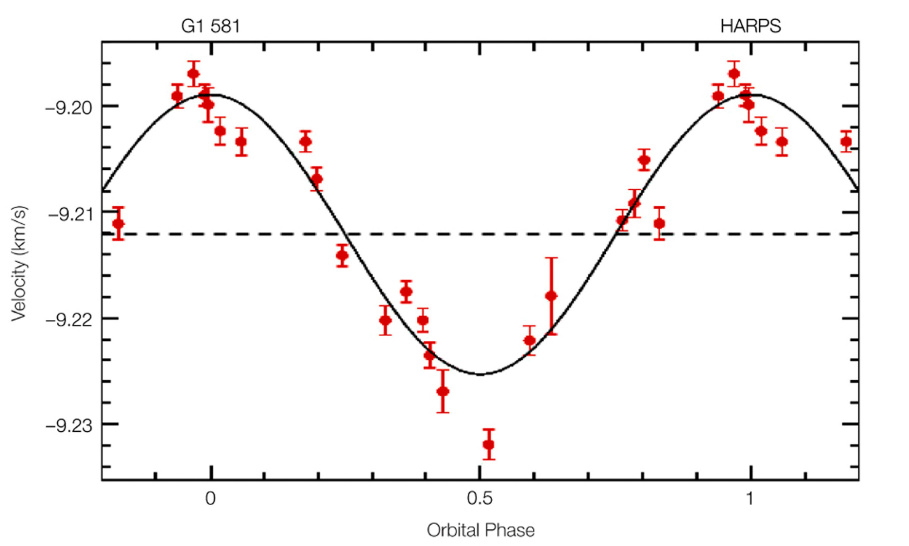When a wave-emitting source moves relative to an observer, a change in the frequency can be perceived. This is the Doppler effect, and it can be heard, for example, when a speeding ambulance or a racing car approaches, passes, and then recedes. The same effect makes the colour of stars vary as their relative velocity with respect to an observer at the Earth changes. When a planet orbits a star, it produces changes in its velocity that can be measured with current instrumentation, like HARPS , with a precision of up to a few tens of centimeters per second. These observations give us the mass of the planet, the size and eccentricity of the orbit, if the characteristics of the host star are known. Additionally, they permit more detailed studies of transiting systems, as a measurement of the spin-orbit alignment.
The Geneva Observatory has a long tradition of precise radial velocity measurements. Starting with the discovery of 51 Peg b by Michel Mayor and Didier Queloz in 1995, many improvements have been made to the technique over the years, which have culminated in the detection of numerous Neptunes, super-Earths and Earth-mass planets around nearby stars. This was made possible by a strong program of instrumental developments that led to the construction of many high-precision spectrographs: ELODIE at Observatoire de Haute-Provence, CORALIE at La Silla Observatory (Chile), HARPS (also at La Silla), SOPHIE (OHP), HARPS-N (La Palma, Canary Islands), and ESPRESSO (ESO Paranal Observatory, Chile).
Large radial velocity surveys have been ongoing on these different instruments and have yielded a whole population of exoplanets of all kinds, from hot Jupiters to systems of Neptune-like objects to Earth-mass planets. Some of these planets may even be habitable (e.g. GJ 581 d). Statistical studies of the planet population allow astronomers to derive global properties such as mass distribution, orbital and eccentricity distribution, dynamical architecture, and host star characteristics. In parallel, a large effort is being made on the follow-up and confirmation of exoplanets detected by transit surveys, such as WASP and Kepler. The combination of a known planetary radius (from transit observations) and a measured planetary mass (from radial velocities) yields the planet bulk density and therefore gives strong clues about the planet composition. As a unique technique to obtain dynamical masses, radial velocity measurements will continue to be a precious asset in our toolbox to characterize exoplanets.

